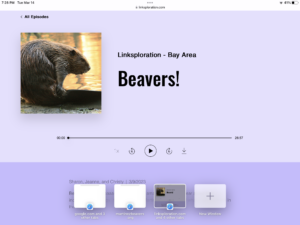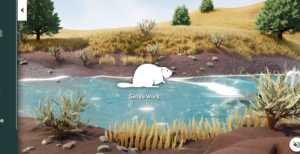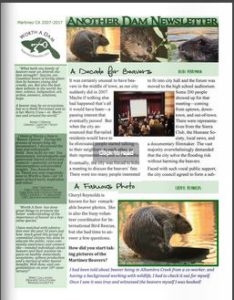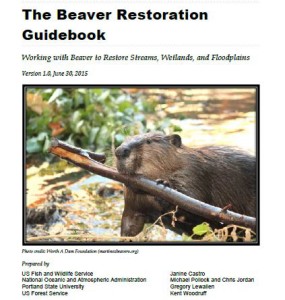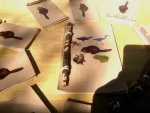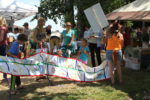Once again a report from Phys.org is unintentionally promoting beavers. You would think they would have a designated beaver monitor or something just to stay alert for these stories. It’s clearly an oversight on their parts, but I try to do what I can.
Streams can be sensors
Scientists at Michigan State University have shown that streams can be key health indicators of a region’s landscape, but the way they’re being monitored can be improved.
 New research featured in Ecology Letters showcases how streams can be used as sensors to diagnose a watershed’s sensitivity or resiliency to changes in land use practices, including the long-term use of fertilizers. Using streams as sensors – specifically, near the headwaters – can allow scientists, land-use managers and farmers to diagnose which watersheds can be more sustainably developed for food production, said Jay Zarnetske, MSU earth and environmental scientist and co-author of the study.
New research featured in Ecology Letters showcases how streams can be used as sensors to diagnose a watershed’s sensitivity or resiliency to changes in land use practices, including the long-term use of fertilizers. Using streams as sensors – specifically, near the headwaters – can allow scientists, land-use managers and farmers to diagnose which watersheds can be more sustainably developed for food production, said Jay Zarnetske, MSU earth and environmental scientist and co-author of the study.
“We were surprised to see that the streams were good sensors of long-term nutrient conditions,” he said. “Our methods show that we can learn much from a relatively small number of samples if they are collected more strategically than current watershed management practices dictate. This understanding is critical in protecting aquatic ecosystems and ensuring human water security.”
Human activity, especially agriculture, has polluted freshwater ecosystems across the planet, causing massive ecological and economic damage. Excess nutrients from fertilizer and fossil fuel can trigger toxic cyanobacteria blooms and expansive hypoxic dead zones, undermining the capacity of ecosystems to provide the food and water that sustains human societies, Zarnetske added.
So what does this have to do with beavers, you well might ask. Ahhh wait for it…
“The manipulation of phosphorous and nitrogen in the landscape is one of the greatest threats to the fate of humanity and the rest of life on this planet,” Zarnetske said. “Most people have no idea that the human manipulation of the phosphorous and nitrogen cycles is occurring, is affecting nearly every place on the planet and is one of, if not the greatest, current threat to the fate of humanity.”
Wow. I never even read a quote like that. And never thought of phosphorous and nitrogen as a threat to humanity. Did you? I knew it was a byproduct of agriculture that wasn’t good. And could create ‘dead zones’. But it never occurred to me that having a lot of ‘dead zones’ could make you end up -well- dead.
Hmmm, it seems to me I’m remembering something that gets rid of phosphorous and nitrogen on the landscape. What was it again? It starts with a ‘B‘.
 Beavers create nitrogen sinks
Beavers create nitrogen sinks
Already known as a keystone species, research shows that beavers in North America can also sink excess nitrogen in the watershed
There are estimated to be around 30 million beavers across North America. As a keystone species, beavers create richer ecosystems around them. By building dams, they hold water down on its way through the habitat – retaining the flow during times of drought and slowing it down during heavy rains and floods. This creates habitats for other endangered species such as toads and songbirds, while beaver ponds create nurseries for juvenile salmon. However, a study by the American Society of Agronomy says beavers are doing something more: they now represent a relatively new and substantial sink for watershed nitrogen.
 Beavers bring environmental benefits
Beavers bring environmental benefits
Results revealed the interconnected pools created by beaver dams increased the retention of organic matter by up to seven times and the level of aquatic plant life 20 fold. Levels of agricultural pollutants were also reduced in areas occupied by beavers, with concentrations of phosphorus halved and nitrate levels lowered by more than 40 per cent.

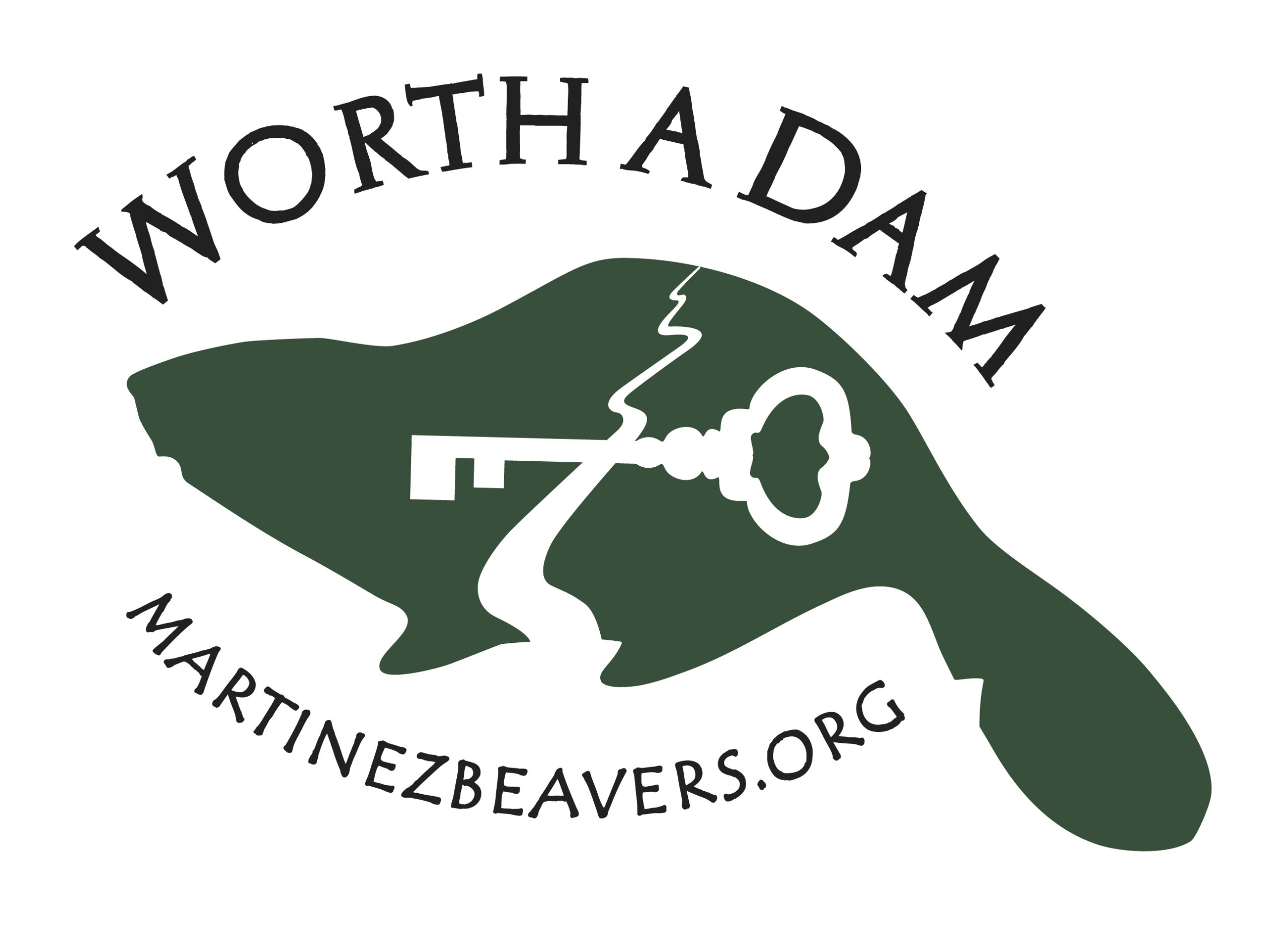

 Casco is a town of just under 4000 in the southern tip of Maine. They are one of those places who can trace their history back to the 1700’s and are best known now for it’s community fair in the summer known as “Casco Days”.
Casco is a town of just under 4000 in the southern tip of Maine. They are one of those places who can trace their history back to the 1700’s and are best known now for it’s community fair in the summer known as “Casco Days”. ongoing skirmish around the culverts.
ongoing skirmish around the culverts. “About every second or third year, they plug the culvert between Pleasant Lake and Parker Pond,” Morton said, adding that was an issue this summer.We have three around Point Sebago Road. Usually, there’s some on Leach Hill Road,” adding the later spot was beaver-free this summer.
“About every second or third year, they plug the culvert between Pleasant Lake and Parker Pond,” Morton said, adding that was an issue this summer.We have three around Point Sebago Road. Usually, there’s some on Leach Hill Road,” adding the later spot was beaver-free this summer.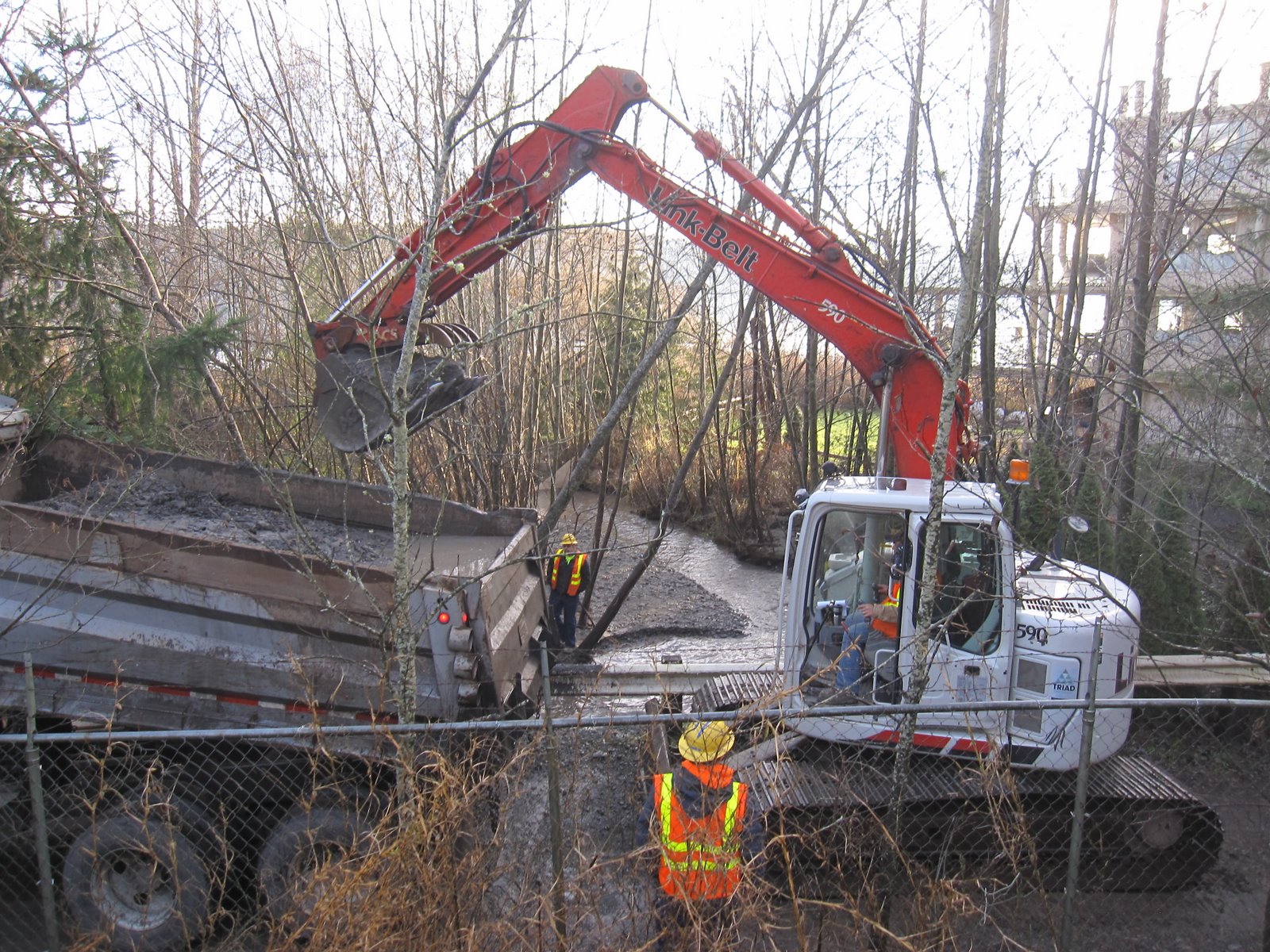 Morton said, “They are fun for people to look at. But, it’s extremely expensive when they plug the culvert.”
Morton said, “They are fun for people to look at. But, it’s extremely expensive when they plug the culvert.” 

 Ahh brave defenders of Putah creek! I’m so sorry that the worship of the salmon idol continues to plague you. Many crazy decisions get made in his name, but the funny thing is that we all know ONE thing that has been proven time and time again to be very, very good for salmon and you’re ripping out his home and driving him out of the area. Even more funny is that he charges nothing for his engineering. I guess some folk never learn.
Ahh brave defenders of Putah creek! I’m so sorry that the worship of the salmon idol continues to plague you. Many crazy decisions get made in his name, but the funny thing is that we all know ONE thing that has been proven time and time again to be very, very good for salmon and you’re ripping out his home and driving him out of the area. Even more funny is that he charges nothing for his engineering. I guess some folk never learn.

 I fought off the climbing screams as long as I could but in the corners of my mind I remembered how the
I fought off the climbing screams as long as I could but in the corners of my mind I remembered how the


 But in following the Port Moody case, where they get a dusting of snow occasionally but the water never freezes, I’ve realized things aren’t entirely clear to me. The city reported that the photo of the beaver in the drain clearly showed it’s “food cache”. But why would a beaver need a food cache where it never freezes? And how would a food cache that’s above the water line be of any use if it did freeze?
But in following the Port Moody case, where they get a dusting of snow occasionally but the water never freezes, I’ve realized things aren’t entirely clear to me. The city reported that the photo of the beaver in the drain clearly showed it’s “food cache”. But why would a beaver need a food cache where it never freezes? And how would a food cache that’s above the water line be of any use if it did freeze? There aren’t may photos of food caches online, which I guess means that they are usually underwater or mostly underwater. But I was able to find a few. I suppose there are beavers in ‘in-between zones’ where it sometimes freezes or has occasionally frozen.
There aren’t may photos of food caches online, which I guess means that they are usually underwater or mostly underwater. But I was able to find a few. I suppose there are beavers in ‘in-between zones’ where it sometimes freezes or has occasionally frozen. his is Paul Ramsay’s photo of the beavers at Bamff where it also doesn’t freeze solid. You can clearly see the sticks. Clearly above water. Where it would be absolutely no use to them to have sticks if it did freeze solid. So what’s up with that?
his is Paul Ramsay’s photo of the beavers at Bamff where it also doesn’t freeze solid. You can clearly see the sticks. Clearly above water. Where it would be absolutely no use to them to have sticks if it did freeze solid. So what’s up with that?




